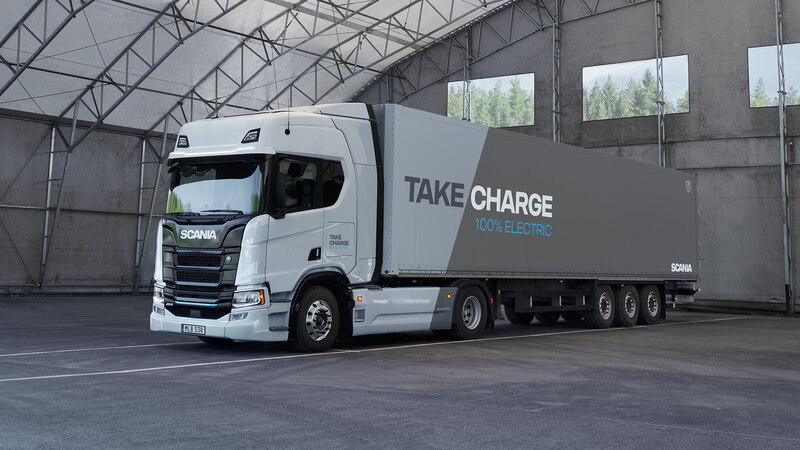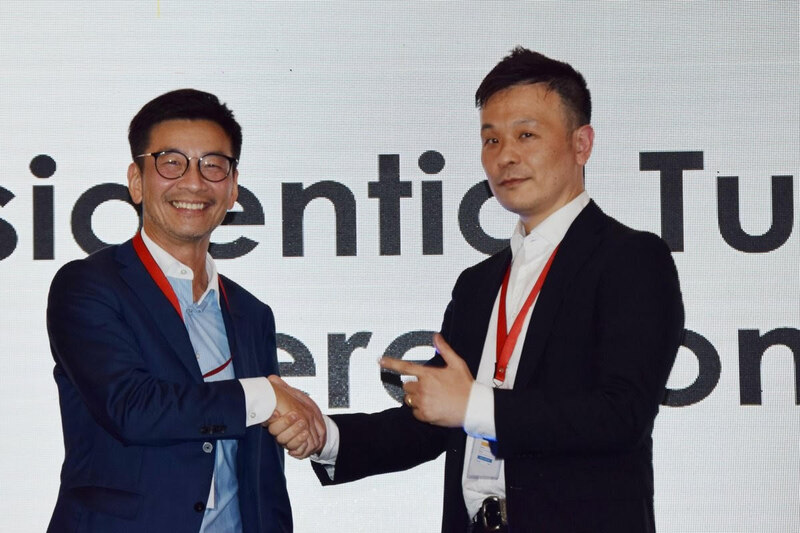SUSTAINABILITY seems to be impossible even when talking about diesel. Diesel engines no matter how refined are still emit harmful pollutants, like nitrogen oxides (NOx) and heavy particulate matter, which have negative impacts on air quality and public health. Diesel engines however are fairly cheap to operate, torquey, needing little care, powerful, reliable, and almost perpetual–an average engine having a four-decade lifespan. This is the reason why it’s the standard powerplant for trucks and buses.
Businesses now consider sustainability as a priority side by side with good operations and profitability.
Advantage: electric
Electric power has several advantages over diesel in terms of sustainability, efficiency, and cost. Some of the key benefits include:
- Emissions: Electric trucks produce zero tailpipe emissions, while diesel trucks emit harmful pollutants, such as nitrogen oxides (NOx) and particulate matter, which can have negative impacts on air quality and public health.
- Efficiency: Electric trucks can be more energy-efficient than diesel trucks, as they don’t experience the energy losses associated with internal combustion engines, such as heat and friction. This means that a greater proportion of the energy stored in the batteries is used to power the vehicle.
- Cost: Over the long term, electric trucks can be less expensive to operate than diesel trucks due to lower fuel costs, reduced maintenance costs, and longer lifespan of components like the battery.
- Quiet operation: Electric trucks are much quieter than diesel trucks, which can be beneficial in urban areas, where noise pollution is a concern.
- Renewable energy: Electric trucks can be powered by renewable energy sources, such as solar or wind power, making them a more sustainable option than diesel trucks, which rely on finite fossil fuels.
Diesel advantage?
Despite the increase in fuel , it’s important to note that diesel trucks still have some advantages, such as longer range and a well-established fueling infrastructure. It’s also important to consider the individual needs of each operation and choose the power source that makes the most sense for the specific application.
Diesel truck engines are not inherently bad, but they can have issues like any other type of engine. Some common problems include excessive emissions, high fuel consumption, engine noise, and durability issues. Additionally, diesel engines can be more expensive to maintain and repair than their gasoline counterparts. However, diesel engines also offer benefits such as better fuel efficiency, longer lifespan, and improved torque and towing capacity. It’s important to note that modern diesel engines have improved greatly in terms of performance and efficiency, and many truck owners find them to be reliable and dependable.
Global regulations
The California Air Resources Board (CARB) in a study called the “Battery Electric Truck and Bus Energy Efficiency Compared to Conventional Diesel Vehicles” reveals that there is a significant improvement in the efficiency of battery powered trucks versus conventional diesel vehicles. Using US standards for different weight classes, vehicle types, and duty cycles, CARB concluded that even in prolonged use with the cleanest and most efficient diesel engine with scrubbers and catalytic converters, the EV truck has a better vehicle energy efficiency ratio is about 3.5 at highway speeds and 5 to 7 times the efficiency of conventional diesel vehicles when operated at lower speed duty cycles. This is because idling and coasting loses from conventional diesel engines continue to produce pollutants.
In Europe, the EU commissions presented a proposal just before the year ended, to reduce air pollution from new motor vehicles sold in the EU to meet the European Green Deal’s zero-pollution ambition. Though this did not focus purely on electric vehicles, it was mentioned that road hauling transportation and buses are seen as a target for change. Since diesel is a standard in Europe, as it is in the Philippines, electrification is a solution.
The new Euro 7 standards are geared to having more cleaner vehicles in European roads for improved air quality, while protecting the health citizens and the lessening the environmental impact to almost zero. Euro 7 standards and CO2 emission standards for vehicles are expected to see an increased uptake of electric vehicles but is engine-agnostic, meaning the internal combustion engine, whether gasoline or diesel will continue to part of the mobility ecosystem. These two sets of rules give the automotive supply chain a clear direction for reducing pollutant emissions, including using digital technologies.
China, the world’s largest market of automobiles, internal combustion or electric, is also putting a lot of pressure on itself to reduce pollution and its carbon footprint. It has implemented a series of emissions regulations to reduce air pollution and improve air quality. Electric trucks are seen as pivotal for the country to achieve sustainability.
China electric trucks: a result of regulations?
China has implemented a series of emissions regulations to reduce air pollution and improve air quality. These regulations cover a wide range of vehicles, including cars, trucks, buses, and construction equipment. A closer look at these
- China National III Emission Standards: This set of standards, which went into effect in 2013, applies to light-duty vehicles, including cars and trucks. The standards limit the amount of pollutants, such as nitrogen oxides (NOx), particulate matter, and hydrocarbons, that can be emitted from vehicles.
- China National IV Emission Standards: This set of standards, which went into effect in 2017, applies to light-duty vehicles and sets even more stringent limits on emissions, including a reduction in NOx emissions.
- China National V Emission Standards: This set of standards, which went into effect in 2020, applies to heavy-duty vehicles, including trucks and buses. The standards set new limits on emissions, including a significant reduction in NOx emissions, and require the use of advanced emission control technologies, such as selective catalytic reduction (SCR) systems.
- In addition to these standards, China has implemented a series of incentives and subsidies to encourage the adoption of cleaner vehicles, including electric vehicles, and has also established a nationwide network of emission testing facilities to ensure that vehicles meet the required standards.
- Overall, China’s emissions regulations are aimed at improving air quality and reducing the negative impacts of transportation on the environment and public health.
Electric buses: pivotal to electrification of the trucking industry
China had the largest fleet of electric buses in the world, with hundreds of thousands of electric buses in operation. The exact number of electric buses in China is difficult to determine, as the fleet is constantly growing and changing, but it is estimated to be in the hundreds of thousands.
In recent years, the Chinese government has actively encouraged the adoption of electric buses through subsidies and other incentives, and many cities have invested heavily in electrifying their public transportation systems. This has led to a rapid growth in the number of electric buses in China, and the country is expected to continue to lead the world in electric bus adoption in the coming years.
The current bus fleet in China now is pegged at an estimated 54 percent of the total buses used in public transportation are battery electric. There are another 466,000 new energy buses (NEB) which is 66 percent of the bus population.
Several cities in Vietnam have started experimenting with electric buses, including Hanoi and Ho Chi Minh City, which have introduced a limited number of electric buses into their fleets. There have also been several pilot projects aimed at testing the feasibility of electric buses in different cities and regions of the country.
Overall, the electric bus market in Vietnam has significant potential for growth, and it is likely that the number of electric buses in the country will increase in the coming years as the government continues to promote the adoption of cleaner and more sustainable transportation options.
The shift towards electric trucks is being driven by a number of factors, including growing concerns about air pollution, climate change, and dependence on fossil fuels, as well as improvements in battery technology and the increasing availability of charging infrastructure.
However, the adoption of electric trucks is also facing a number of challenges, including high upfront costs, limited range and payload capacity compared to traditional diesel trucks, and the lack of a widespread charging infrastructure.
As a result, it is likely that the transition to electric trucks will be gradual, and that a mix of electric and traditional diesel trucks will continue to be used for some time, particularly in sectors with high payload requirements and long haul routes.
According to Technavio’s Global Electric Trucks Market 2023-2027, the market share growth by both hybrid electric trucks and battery electric trucks will be significant during the forecast period. In a hybrid electric truck, the electric motor is propelled by a battery that is either charged externally or by regenerative braking. Due to their long driving range and low operating and maintenance costs, hybrid trucks are experiencing continuous growth. Truck manufacturers are being compelled to create hybrid electric trucks by rising environmental consciousness and legal standards to reduce emissions. All these factors are responsible for market growth during the forecast period.
Overall, while electric trucks have the potential to transform the transportation industry, it is uncertain if they will become the standard and the speed at which they will be adopted will depend on a number of factors, including advances in technology, the availability of charging infrastructure, and changes in government regulations and incentives.





